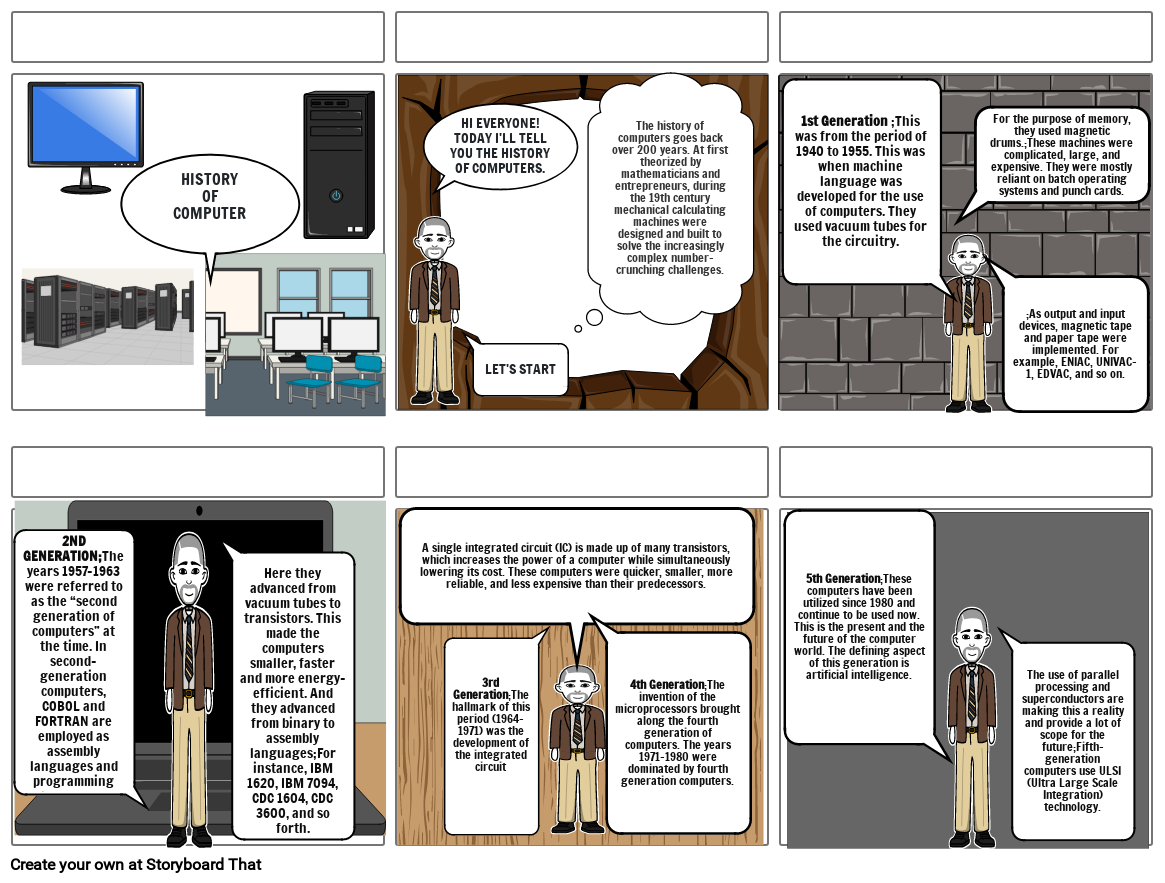HILARIO - ACTIVITY 1

Storyboard Text
- HISTORYOFCOMPUTER
- HI EVERYONE! TODAY I'LL TELL YOU THE HISTORY OF COMPUTERS.
- LET'S START
- The history of computers goes back over 200 years. At first theorized by mathematicians and entrepreneurs, during the 19th century mechanical calculating machines were designed and built to solve the increasingly complex number-crunching challenges.
- 1st Generation ;This was from the period of 1940 to 1955. This was when machine language was developed for the use of computers. They used vacuum tubes for the circuitry.
- For the purpose of memory, they used magnetic drums.;These machines were complicated, large, and expensive. They were mostly reliant on batch operating systems and punch cards.
- ;As output and input devices, magnetic tape and paper tape were implemented. For example, ENIAC, UNIVAC-1, EDVAC, and so on.
- 2ND GENERATION;The years 1957-1963 were referred to as the “second generation of computers” at the time. In second-generation computers, COBOL and FORTRAN are employed as assembly languages and programming languages.
- Here they advanced from vacuum tubes to transistors. This made the computers smaller, faster and more energy-efficient. And they advanced from binary to assembly languages;For instance, IBM 1620, IBM 7094, CDC 1604, CDC 3600, and so forth.
- A single integrated circuit (IC) is made up of many transistors, which increases the power of a computer while simultaneously lowering its cost. These computers were quicker, smaller, more reliable, and less expensive than their predecessors.
- 3rd Generation;The hallmark of this period (1964-1971) was the development of the integrated circuit
- 4th Generation;The invention of the microprocessors brought along the fourth generation of computers. The years 1971-1980 were dominated by fourth generation computers.
- 5th Generation;These computers have been utilized since 1980 and continue to be used now. This is the present and the future of the computer world. The defining aspect of this generation is artificial intelligence.
- The use of parallel processing and superconductors are making this a reality and provide a lot of scope for the future;Fifth-generation computers use ULSI (Ultra Large Scale Integration) technology.
Over 30 Million Storyboards Created

